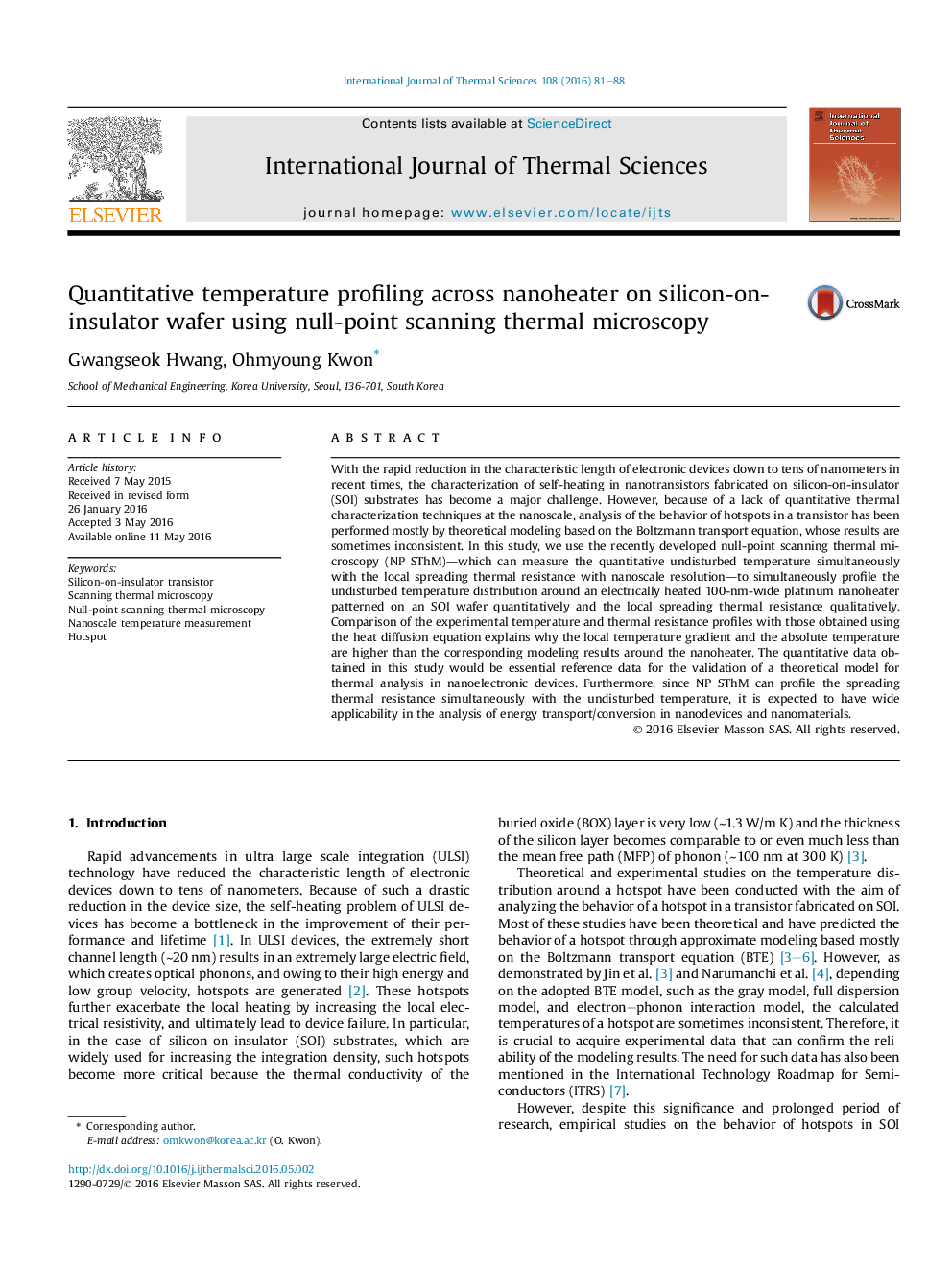| Article ID | Journal | Published Year | Pages | File Type |
|---|---|---|---|---|
| 668313 | International Journal of Thermal Sciences | 2016 | 8 Pages |
•We concurrently profile temperature and thermal conductivity across nanoheaters on SOI.•Optimal measurement conditions to maximize SNR of NP SThM are found systematically.•Experimental temperature profiles are compared with diffusion modeling results.•Effects of silicon thickness and heating power on the temperature profile are studied.•The utility of NP SThM for nanoscale energy transport/conversion analysis is shown.
With the rapid reduction in the characteristic length of electronic devices down to tens of nanometers in recent times, the characterization of self-heating in nanotransistors fabricated on silicon-on-insulator (SOI) substrates has become a major challenge. However, because of a lack of quantitative thermal characterization techniques at the nanoscale, analysis of the behavior of hotspots in a transistor has been performed mostly by theoretical modeling based on the Boltzmann transport equation, whose results are sometimes inconsistent. In this study, we use the recently developed null-point scanning thermal microscopy (NP SThM)—which can measure the quantitative undisturbed temperature simultaneously with the local spreading thermal resistance with nanoscale resolution—to simultaneously profile the undisturbed temperature distribution around an electrically heated 100-nm-wide platinum nanoheater patterned on an SOI wafer quantitatively and the local spreading thermal resistance qualitatively. Comparison of the experimental temperature and thermal resistance profiles with those obtained using the heat diffusion equation explains why the local temperature gradient and the absolute temperature are higher than the corresponding modeling results around the nanoheater. The quantitative data obtained in this study would be essential reference data for the validation of a theoretical model for thermal analysis in nanoelectronic devices. Furthermore, since NP SThM can profile the spreading thermal resistance simultaneously with the undisturbed temperature, it is expected to have wide applicability in the analysis of energy transport/conversion in nanodevices and nanomaterials.
